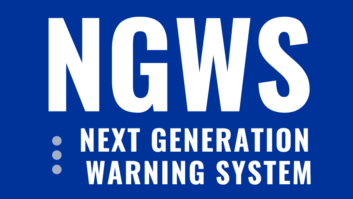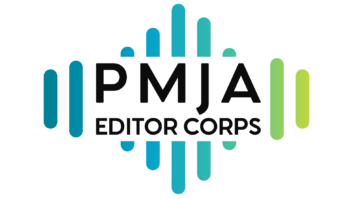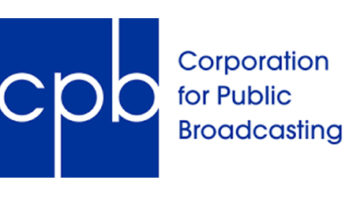
The culture war for public radio stations came into focus 31 years ago, when President Reagan’s budget director David Stockman fired the first verbal shot by announcing he was going to zero-out funding for the Corporation for Public Broadcasting. That action ushered in three decades of inconsistent congressional funding, grandstanding, threats and panics within the system. Still, CPB decided to continue funding new radio stations in un-served or under-served markets.
Somewhere in recent years, however, this strategy collided with the financial realities of CPB-qualified stations, leaving the system in dire need of some sort of reform. At stake is the very soul of the public radio system, including the life of independent, community-based small market stations.
Small-market stations have far fewer resources, especially when major-market “cousins” close by drop in for a “visit.” I can’t think of a better example of where this crisis plays out than on bus bench advertisements that were recently placed in Salisbury, Md,, in the heart of the Delmarva Peninsula.
More than 100 miles from its home base in Washington, public radio stalwart WAMU(FM) decided to place “tune-in” ads on bus benches in Salisbury. Why? The story goes: to increase awareness of WAMU’s new associate station in Ocean City, a station started to serve loyal WAMU listeners vacationing at the beach.
There are two problems with this explanation: 1) The Salisbury bus benches are 40 miles west of the Delmarva coastline, and no one vacations in Salisbury, and 2) one of the cute bus bench ads was placed just across the street from the studios of WSCL, one of three local public stations struggling to survive in this very small radio market.
The WAMU bus bench ad story led me to write to the CPB, which is in the midst of evaluating and revising the way it distributes Community Service Grant funds to CPB-qualified stations. This commentary contains a great deal of the message that I sent to them.
Since the 1970s, we have seen phenomenal growth in the number of public radio signals available across the country, from large to small markets. In Colorado’s Eagle Valley (including Vail) and Summit County (including Breckenridge), no local public radio station exists.
But today three public signals are repeated from stations from across the Continental Divide in Denver and Greeley. This type of situation is ideal for places without a local station. But the rub comes when a small-market CPB-funded station, with relatively limited financial resources, must compete with a new major-market station signal that has arrived in their small market.
In those situations, if we are to see the survival of the local station (and the programming diversity and training opportunities that it brings), funding has to be altered in favor of the local station.
Speaking from experience
When I worked at WSEA(FM) in Georgetown, Del., in 1977, the closest public radio signals were more than 100 miles away. Aside from the fun part of my job hosting album rock, I worked in the sales department during the day and came face-to-face with the challenges of selling advertising in a small market, scattered across Sussex County, Del., and the Eastern Shore of Maryland.
It isn’t nearly as easy or lucrative as maintaining multiple accounts in a section of a major city.
Raising money for radio on Delmarva is tough, period. But with CPB support and with the University of Maryland, Eastern Shore on board, WESM(FM) signed onto the air in 1987, followed closely by WSCL(FM) from Salisbury State University.
Knowing this market, I had to pinch myself the first time I heard strains of “Kind of Blue” and Mozart coming over my radio during a 1989 vacation in Bethany Beach.
Bringing unique programming to Delmarva is a challenge. WSEA(FM)’s format was changed in late ’77 to a more marketable disco/hits format, so I can fully appreciate the added burden for WESM(FM) and WSCL(FM) when WAMU(FM) set up shop in Ocean City, airing some of the same programming to a relatively small-but-faithful NPR listener base in the area.
Here’s what I’d like to see
When reporting their annual Non-Federal Financial Support (NFFS), WAMU should be required to isolate their reporting of NFFS from Delmarva (at least the eastern half of the Peninsula, clearly out of reach from WAMU’s primary signal). That portion of WAMU’s NFFS should be divided equally between WAMU, WSCL (with two stations) and WESM; matched by CPB accordingly.
It was CPB that started us on the path to fund and nurture small-market stations. If they are to survive, CPB must make adjustments, now. It must revamp CSG distribution so that stations not enjoying major-market listener and business support potential are placed at the front of the CPB funding line.
It’s nice that WAMU enthusiasts can listen non-stop to their station all the way from Washington to the beach, from Lewes, Del., south to Assateague Island, Md.
But the question remains: With all of CPB’s investment in local small-market radio thus far, is maintaining the funding status quo akin to throwing in the towel on what seemed like a great idea, just a few years ago? And, if that is true, what kind of national public radio system is CPB building now?
I look forward to a timely decision by CPB because, this just in, WHRO(FM), Norfolk is also setting up shop on Delmarva with its own repeater in the coming months.
One can argue this is a climate of desperation experienced by all public stations, but that is an issue that Congress has yet to address adequately.
Pete Simon has worked at community and/or public radio stations as manager, program director and reporter/producer. Stops have included WHYY(FM); KCSU(FM), Fort Collins; KPRN(FM), Grand Junction (before and after the creation of Colorado Public Radio); and KVNF(FM), Paonia, Colo. Recently he has been a volunteer jazz host on KUVO(FM).












